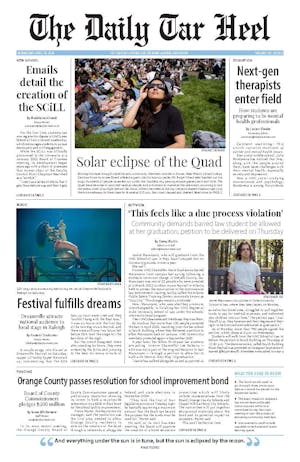By Michael Liguori
Politico recently reported that there was a $21.8 billion shortfall in the federal budget caused by federal student loans.
The total outstanding student debt in the U.S. is more than $1.2 trillion, and 40 million Americans are carrying that debt. However when they fail to make payments on time or prove unable to pay back at all, the debt is shifted to the federal government. That debt was then automatically absorbed into the federal government’s existing federal deficit of $478 billion.
Politicians talk about the federal deficit as well as student debt frequently, and the numbers with which they discuss them are massive. It may seem ridiculous that costs this massive can be pushed around when no one can shoulder them except for future taxpayers, but it is important to examine underlying causes.
American students find themselves in a paradox. While a college education allows some students to learn a specific trade or intellectual discipline about which they are passionate, an associate’s or bachelor’s degree also offers a pathway to a higher standard of living.
It’s been long understood that higher-paying jobs prefer to hire more educated employees, and a 2014 New York Federal Reserve study further confirmed that is true, even in hard economic times. As of 2013, the average annual wage of a worker with a high school diploma was around $38,000, while the wages for workers with associate’s degrees and bachelor’s degrees were roughly $46,000 and $67,000 respectively.
Although wages for college-educated workers have stayed high with some consistency, the cost of education has been growing. The full cost of the average public four-year university on campus is $37,229 and a private four-year university on campus is $46,272. When students know that getting a college education can improve their financial status throughout life, but can’t afford that education, a problem emerges.
Students choose the sensible financial option of going to college. Some of these students’ families can afford tuition and associated costs, but the rest need to take out loans. The federal government, in order to offer more opportunity to more citizens, begins offering federal loans that have lower interest rates than private loans.
Under normal circumstances, the students who took out loans would be on their own, but federal assistance changes the game. The Politico article mentions that President Barack Obama made efforts to offer different forms of debt relief and forgiveness to students who could not handle their debts.
Between high incentives for pursuing a college education and rapidly increasing costs associated with that education, politicians, voters and taxpayers are in a bind. Should the federal government be tasked with the burden handling runaway tuition prices for its citizens, or should education be left as a feasible option only for those who can already afford it?
state@dailytarheel.com
To get the day's news and headlines in your inbox each morning, sign up for our email newsletters.



